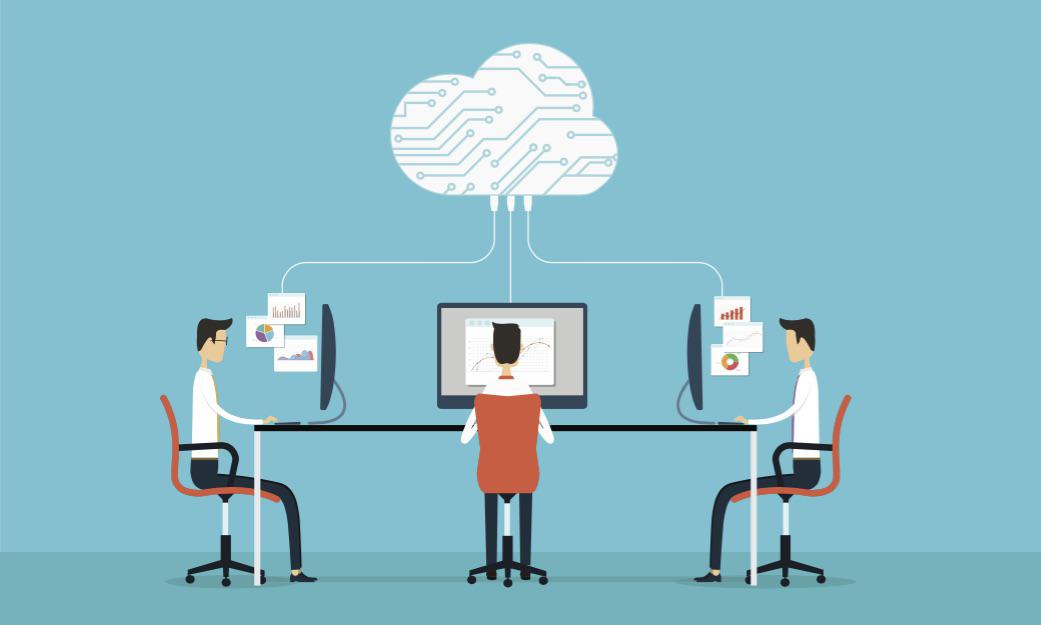Cloud computing has served as a buttress for the global economy over the past year. With businesses forced to deploy a distributed workforce during the coronavirus pandemic, the cloud guaranteed the survival for millions of companies and billions of jobs.
The pivot to cloud computing will continue to help businesses to navigate the precarious water and enable them to scale with little fuss. As cloud services continue to evolve they will offer more agility, mobility, business continuity, cost-efficiency and security than traditional in-house servers provide.
Moreover, advancements in cloud technologies promise to enhance business performance and support emerging technologies such as the blockchain, Internet of Things (IoT), Artificial Intelligence (AI) and the growing need for enhanced cybersecurity.
Gartner predicts end-user spending on public cloud services will grow by 18.4% in 2021. SaaS (Software as a Service) remains the largest market segment, but other cloud services such as PaaS (Platform as a Service ) and FaaS (Function as a Service) are expecting to be big movers this year.
As enterprises continue to stay afloat and profit from services and features offered by the world’s leading cloud service providers, cloud computing will undoubtedly influence boardroom decision making. Cloud computing has a key role to play in 2021.
Table of Contents
Serverless Cloud-Computing
In a year where managing underfunded budgets will be a priority for many companies, the serverless cloud computing model is expected to gain further traction in 2021. Serverless was among the top five fastest-growing PaaS cloud services last year.
Serverless cloud services enable app developers to write code without having to invest in physical hardware. Companies with plans to build an app, only need to pay for backend services and are billed for computation on a fixed monthly ‘pay-as-you-go’ rate. The serverless model can significantly lower the costs of developing an app.
Serverless computing has also made the IT landscape more dynamic. Although still in its nascent stage, open-source infrastructures that support serverless cloud computing – such as Kubernetes – provide features that enhance networking, service discovery, agile scaling and multi-cloud environment support.
In addition, the meteoric rise of FaaS (Function as a Service) within serverless ecosystems also provides app developers and IT teams with a platform to run and manage applications without the complexities typically associated with building and maintaining app infrastructure.
OpenFaaS is a relatively new architecture that gives businesses the option to request one-off services “on-demand” rather than the “always-on” subscriptions offered by Amazon Web Services (AWS), Google and Microsoft Azure et al. Use cases are wide-ranging.
Examples include ETL (extract-transform-load), IoT, batch processing, stream processing, web applications and API (Application Programming Interface) that facilitate existing applications without you having to modify or reprogram functionality.
Life On The Edge
Moving forward, Edge computing is expected to play a huge role across key industries including finance, manufacturing, security, healthcare, and retail. Capable of processing huge swathes of data in milliseconds, edge computing is destined to take centre stage in data management.
Forresters have called on firms to “make edge computing a key investment.” This next-generation technology is faster, scalable, cost-effective and more reliable than traditional cloud services.
Gartner predicts 75% of data will be processed at the Edge by 2025. Focused on optimising data collection, processing and reporting, edge computing sends and receives immediately and works outside of traditional, centralised data centres. The innovative technology is expected to empower the network values of businesses.
The growing number of data transfers and digital transaction – not to mention the growth of ‘cashless’ digital payments – requires high-latency so that data can be processed in real-time. Milliseconds make a significant difference. For example, in manufacturing processes are monitored using digital technologies and rely on immediate, consistent data.
Existing cloud infrastructures are not capable of transferring huge amounts of data back and forth. When networks are overloaded they fail, resulting in downtime and a loss of productivity. In some industries, low-latency could create hazardous conditions for workers using machinery.
Storing data in the edge of the cloud brings it closer to the end-user. This eliminates potential latency and guarantees faster response times. The upshot for businesses is that edge computing reduces traffic loads and enhances performance so your data is readily actionable.
Business Are Getting SASE
Pronounced “sassy”, SASE is an emerging technology that brings all your networking and security products under a single dashboard. The combined network architecture facilitates remote working and enables you to integrate existing technologies without having to invest in additional software or hardware.
The circumstances of 2020 forced enterprises to explore how they could connect, manage and organise a distributed workforce without compromising data security. Despite the swiftness in approach, there are still a number of solutions to be resolved.
Created by Gartner, SASE – secure access service edge – streamlines network access by combining software-defined WAN capabilities and cloud-native network security functions.
The new-generation cloud-based service gives you complete visibility across hybrid environments together with full control over data from every user and app. Not only does this help to relieve the administrative burden of IT professionals, but it also produces reports for key metrics and provides valuable insights for C-level executives.
In addition to improved network performance, SASE eliminates updating, patching, and scaling appliances. Maintenance and security engines are managed by SASE vendors that inspect traffic flow at source.
The security side relies on secure web gateways, cloud access security brokers, firewalls-as-a-service, web-API-protection-as-a-service, DNS and remote browser isolation and zero-trust network access.
The technology makes it easier to facilitate a distributed workforce but may require a big sell to employees. With zero-trust network access, users are identified as individual rather than an IP address and have to go through additional levels of user access, such as multi-factor authentication. Behavioural patterns are also analysed.
Whilst security performance is improved, a high degree of trust must be placed in the SASE provider. IT professionals will need to perform due diligence when determining the trust and reputation of SASE vendors. It is not always a safe option to assess capability alone if there is any possibility they could be involved in the “big business” of selling customer data.
Enhanced Data Protection
With more companies enabling employers to use multiple devices and storing sensitive data in a segregated environment, security is a primary concern. Businesses face a multitude of IT security risks.
A Cloud Computing Survey 2020 published by IDG reveals that almost 42% of large-scale enterprises believe data privacy and cybersecurity poses the biggest problem to their multi-cloud strategy. The more apps and devices a company uses, the greater the risk.
Moreover, Interpol reported a significant increase in cyberattacks targeting employees working from home during the coronavirus pandemic. With applications and data housed in third-party infrastructure, monitoring data has become increasingly problematic.
The vulnerabilities of applications and BYOD, means data breaches, together with the loss or theft of business intelligence pose critical security challenges and more potential for malicious actors to hack their way into business networks.
Criminal activity is also becoming more sophisticated in the digital landscape and cybercriminals are deploying more techniques such as malicious domains, penetrative malware, ransomware and spam that seeks to exploit the actions of end-users.
Cloud security – whilst not airtight – brings applications, data, devices and business networks into a centralised space. This makes cybersecurity easier to manage, monitor and prevent.
Managing a myriad of assets centrally aids traffic and behavioural analysis, network monitoring and web filtering. In addition, it minimises the amount of software and policy updates and streamlines disaster recovery plans.
Cloud service providers, and/or IT support agencies are also responsible for performing security configurations and consistent security updates. According to Bitdefender, the vast majority of data breaches are due to cloud misconfigurations – 8 out of 10 companies in the United States.
Cloud configuration can also be a massive drain on IT resources. Shifting the obligation on to a cloud service provider frees up your IT team to focus on more important tasks and makes the ongoing administration of your data protection measures far easier.
Moreover, today’s cloud security technologies are practically impenetrable. Gartner predicts that 99% of data breaches over the next four years will be due to user error.
That said, underestimating the risk of data breaches can be as equally detrimental as persisting with legacy technologies. Businesses that do pivot to the cloud are advised to develop a comprehensive cloud strategy that incorporates making employees aware of security risks and implementing policies that avoid potential data breaches.
The coronavirus pandemic may have expedited the shift to a cloud-based infrastructure, but advancements in digital technologies and employee demands would have prompted businesses to make the switch anyway – eventually.
On the plus side, the seismic crossover in the past year has prompted cloud innovation and service providers can offer a number of key features that provide effective solutions. Cloud-computing in 2021 and beyond promises to be a game-changer.
Author Bio: James Kirby
James is an experienced IT solutions provider and Managing Director of MicroPro in London. When he is not keeping IT networks running seamlessly he can be found farming around Kent.




